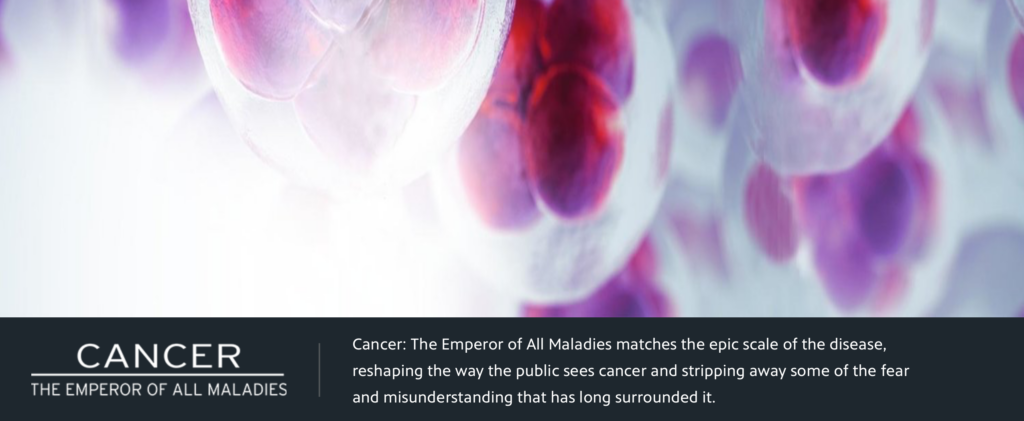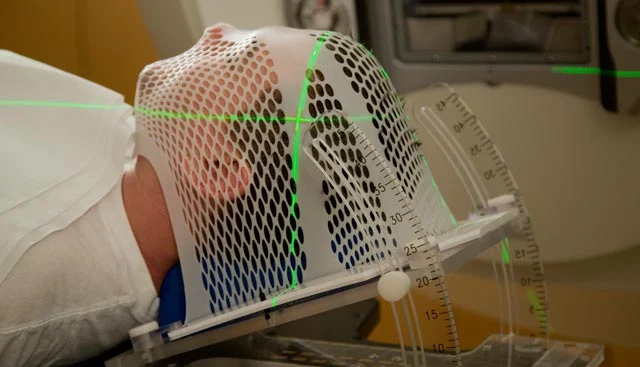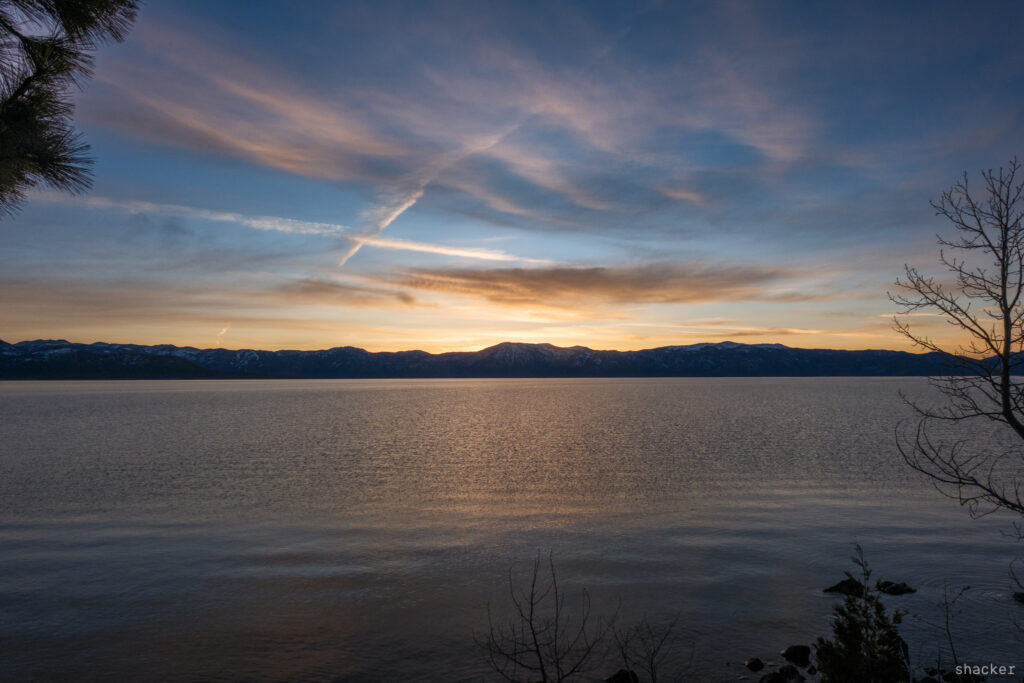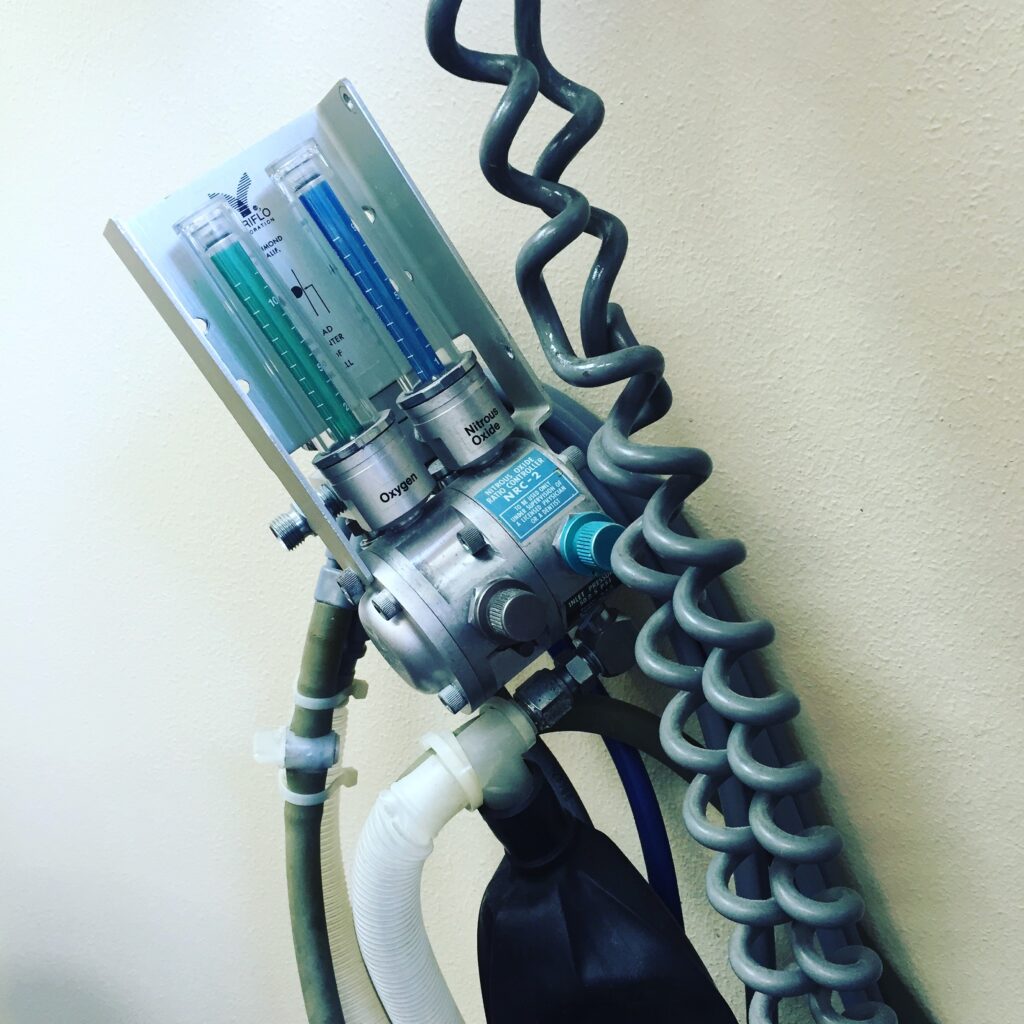Hiking at Hillside with Temmo, the evening before treatment begins, I suddenly felt inspired to show my face to share some thoughts on where we’re at and what comes next.
Emperor of All Maladies
Anthropologists once unearthed an ancient Egyptian list of known diseases and their treatments. A description matching that of cancer was found on the 4,000-year-old list, alongside hieroglyphics saying essentially “There is no cure.”
I’d heard very good things about the book “Emperor of All Maladies” by Siddhartha Mukherjee, and found a copy in Bookshop Santa Cruz last weekend, but it was a giant tome and I knew I’d never get through it. Happy to find, though, that it had also been made into a documentary by Ken Burns.

Supposedly available on PBS, but when we went to watch it tonight, found that all you get online is an odd-collection of 25 five-minute clips. No explanation for why it wasn’t available in its entirety, but many of the clips are fascinating. Worth perusing to catch up on why the disease has proved so elusive to cure over the centuries, not to mention the cruel treatment dished out to its victims when doctors didn’t know what else to do.
Interesting watch.
Cancer Don’t Care
“Cancer? But you look so healthy!”
That’s what the proprietor at the Thai restaurant said when I went to pick up our dinner the other night. I’ve started to realize what a common misperception this is – that cancer only affects people who are sick, or weak. But that’s because we think of it as a disease like other diseases, rather than a random outbreak of cell mutations. Cancer hits healthy people all the time. Cancer don’t care.

I watched a YouTube video the other day by a guy who got the same Squamous Cell Carcinoma throat cancer that I had. Everything about his diagnosis and treatment was identical, until we got halfway through, and he revealed that he was going to “treat it” with a vegan diet, juicing, and fasting. Wanted to get really healthy, too healthy for cancer. But it was such a profound misunderstanding, and he paid for it. As months went by, his visible tumor shrunk, and he thought he was on a good path. But when he went for his next scan, a whole string of lymph nodes was cancerous. The visible tumor had only shrunk because the cancer cells had consumed it, and moved on to other nodes. The only “health” happening there were the cancer cells themselves, who were flourishing as he left his cancer untreated.
Stay healthy, yep. But don’t think for a second that your health will protect you. Cancer don’t care.
Being healthy may help you survive it, and avoiding behaviors like smoking will prevent getting certain kinds of cancers, sure. But many cancers affect us pretty much at random – roll of the dice.
Mesh Mask and Laser Light
Two-appointment day.
Now that the dental work has had time to heal, it was finally time for my final CT mapping – the scan that will be used to precisely focus and target the radiation for maximum benefit and minimum side-effects. And to do that precisely, my head will need to be in exactly the same position on every treatment.

Good Pain and Helpful Perspectives
I’ve done a lot of long-distance cycling over the past 15 years. Today my brother helped me to surface a useful perspective on what I’m about to go through. Endurance athletes learn to recognize the difference between bad pain (neck pain or foot pain from repetitive motions and positions) from good pain (“Shut up, legs!”) via exhaustion when pushing yourself beyond normal tolerances. “Good pain” is the kind that makes you feel like you’re building your body, creating long-term health, that you just have to suck up and get through it for a larger win in the end. The trick here, I think, will be to frame the pain of radiation burns and chemo exhaustion as good pain – pain for a greater good. Something I have to just go through and get through to achieve a destination of greater health. I love that way of looking at what’s about to come.
A few nights ago, Amy and I spent some time watching YouTube videos – a combination of medical/scientific and survivor stories, trying to get a handle on things. Thought I’d share a few of those here.
A basic view of the face/shoulder harness I’ll be wearing for daily treatments, and the process:
Where I intend to be: Making all appointments, staying positive, and staying fit:
The chemo part, and the delicate balance between doing damage and doing harm to cells and tissues:
Microplastics in the rain
Remember acid rain and the hole in the ozone? You don’t hear much about them anymore because we fixed them – in the 70s it was still possible for scientists and industry and the public to agree on facts, mobilize, and act. Now we’ve got a new and larger problem – microplastics in the rain. But this one is harder to solve, and we’ve lost the ability to cooperate.
https://www.vox.com/climate/401600/pfas-microplastics-pollution-rain
Last Hurrah – Tahoe with work crew
When the diagnosis rolled in and I realized what the treatment schedule was going to look like, I made a list of all my spring and summer plans to figure out what to cancel. Which was pretty much everything – there’s no way to take a break in the radiation course, nor to move it to another clinic. Because I’ll need the custom-fit fiberglass mask that will strap my head down in perfect position and be bolted to a tray that will clip into the radiation toboggan, and because it’s essential that the radiologist have consistent experience with patients, I can’t go anywhere for two months once treatment begins. Add in recovery time, and we can pretty much call it three months.

So I canceled plans for a couple of organized rides, told my parents I wouldn’t be able to visit Morro Bay for a while, and told Ward that backpacking was out for me this Spring.
That left the annual work ski trip, which always happens in late March, and is a highlight of the year for me. We love to do one day of snowboarding/skiing, and one day of snowshoeing, eat a lot of great food, and get to know people in other departments. But when I brought it up with the oncology surgeon a couple of weeks ago, he surprised me by saying “You have to go – it’ll be a great outdoor experience to remember when you’re in the thick of things, and a reminder of what you want to get back to when this is all over. ” Good advice. Turns out he’s an active snowboarder too.
Continue reading “Last Hurrah – Tahoe with work crew”So Long, 6-Year Molar
When we’re six, we get our first set of molars. When we’re 12, we get our second set. I had my 12-year molars removed a while back, but the dental oncologist decided that one of my 6-year molars – a workhorse that’s served me perfectly for 54 years, had to go. Not that it’s shot – it has more time to serve – but it’s showing signs of root problems. After radiation, my jaw will loose its vascularity (blood flow) and it will no longer be possible to do dental surgery that involves the jaw, nor will I be able to have dental implants. If I need to lose a tooth in the future, it’ll have to “exfoliate” naturally (wiggle free slowly over time). To avoid that hassle, dental oncologists try to figure out which teeth will need to come out in coming decades to prevent that problem before it starts.

Anesthesia is a modern miracle. Today I went to sleep in a dentist’s chair and woke up 45 minutes later none the wiser, while a surgeon yanked that molar right out of my head. Went home chewing on gauze, and with prescriptions for antibiotics and pain relievers. I had braced myself for a really painful recovery, but it’s really no big deal. Grateful to live in this age of modern medicine.
Dental oncology and a delay
A few days ago, I had no idea there was such a thing as “Oncology audiologist” or “Oncology dentist.” But radiation treatment can have real impacts on both hearing and dentistry, and they need baseline measurements and preparatory conversations before getting started.
The audiology visit came first. They led me into a soundproof room with thick walls, and inserted a series of earbuds into my ears and played long series of clicks and tones at high and low tones, with progressive degrees of quietude. Also, tests where I was asked to repeat words back. My hearing is normal, with typical falloff at the high end correlated to my age. Potential effects of radiation would probably be either tinnitus or mild hearing loss. Possible future hearing aids if that does come to pass, but it’s rare. Not much to say here.

The Dental Oncology visit was more intense. I’ll definitely need fluoride trays, and to fluoridate nightly during treatment (loss of saliva during treatment means a much higher likelihood of cavities). But why is there less saliva? Because my salivary glands will be irradiated too, and damage to them could be permanent. I should expect a drier mouth for the rest of my life. Apparently, these days they are able to do a better job of targeting radiation so that it has minimal impact on salivary glands. And some people even have pre-surgery to move the glands! That prospect did not come up in my case.
The really scary/new information was that the radiation will also affect vascular flow in the jaw, which will make it impossible for it to heal in the future. That, in turn, means I will not be able to have teeth removed or implants done in years to come. So it’s important to get everything removed now that looks like it might be a problem down the line, and the doctor did find one tooth that seemed to have borderline future prospects. So, on top of everything else, I now have to have emergency dental surgery to have another molar removed, which means it’s going to get even harder to chew and swallow.
Not the news I wanted to hear, but I do appreciate the wisdom of it.
The next morning was to be my final CT scan – the “mapping and planning” one. Unfortunately, when I got there, they told me that we’d have to delay that because the tooth removal would change the structure of my mouth. So now I need to get the tooth extracted ASAP, give it 7-10 days to heal, and then do the final CT scan. Not great.
So Many Appointments
Hi everyone –
Physically, I don’t feel that much different – I need a bit more sleep, my throat feels kind of “thick” with just a bit of difficulty talking sometimes. The hard part is yet to come.
Emotionally, I’m coming to terms with what’s coming down the road. I’ve learned a ton in the past week, and all of the information has helped turned a big scary mystery into a big scary plan. But I no longer have “fear of the unknown.” I know it will be uncomfortable and then painful and I just have to be here for it.

The number of appointments and scans involved in planning for cancer treatment is just ridiculous (but everything has a reason – no complaints). Trying to fit all of this into my work schedule has been a challenge, but work has been really supportive – no one is complaining that I’m missing half the time. I’m keeping a log of appointments I’ve had or that are coming:
Continue reading “So Many Appointments”